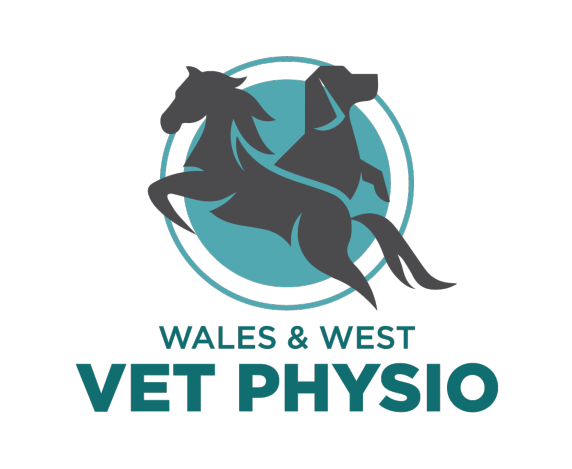Muscle Disorders in Horses
My fascination with equine muscle dieases such as polysaccharide muscle myopathy (PSSM), started when my own horse received a diagnosis of a myopathy of unknown causes . Acquired as a 5-year-old with aspirations of eventing, he began displaying an intermittent lameness as an 6yo, and was diagnosed with ulcers during the first winter. Although these were successfully treated , he remained lethargic, disinterested in his work, and generally uncooperative.
In response to the diagnosis , I modified his lifestyle, making changes which included changing his diet and exercise regimen which prioritised fat utilisation as the primary energy source.
The positive impact on my horse's condition led me to explore similar exercises for symptomatic horses and as part of my degree, I conducted a study into raised poles and passive stretches. Although a small study, and therefore it didn’t reach statistical significance, there were marked trends demonstrating improvements in both pain levels and gait abnormalities.
Symptoms of Polysaccharide Storage Myopathies
PSSM is not curable but can be better managed using a combination of daily movement and diet. Depending on the type of myopathy, symptoms can vary widely, and are thought to be associated with pain in the muscles
Diet and controlled exercise play a very important role in improving the condition in horses. The goal is to stabilise blood glucose and insulin and provide a regular exercise regimen that enhances glycogen metabolism. Both exercise and dietary changes have been shown to result in an improvement in symptoms.
An affected horse may show some / most of the symptoms described but is unlikely to show them all
Muscle wasting & hard muscles
Fascial restriction lines
7-year-old mare, diagnosed one year earlier with PSSM2 (n/p2, n/p3). She lost 200lbs over the year, and developed fascial lines , muscle atrophy and hypertonicity.
Image courtesy of Equisec.com
“Diet alone will not “fix” a PSSM horse – it is the combination of the appropriate feed along with physical movement that leads to a change for the better.” (Valberg, 2012)
Muscle Symptoms
Tense, hard or flaccid muscle
Difficulty building muscle
Muscle twitching
Muscle divots
Difficulty in picking up hind-legs
Excessive sweating
Prone to colic/ tying-up
Small eye- white of eyes show
Behaviour Symptoms
Unpredictable behaviour
Sensitive to rain, cold and wind
Lying down more than normal
Lethargic under saddle
Explosive or spooky under saddle
Movement Symptoms
Poor performance
Stiff/Stuffy on lunge or under saddle
Mild, shifting lameness
Takes a long time to warm up (>15 mins)
Tires easily / low energy
Canter difficulties
Finds schoolwork hard – may grind to a halt after 5-10 mins.
Rope-walking
Consulting with a qualified physiotherapist or veterinarian regarding PSSM is important for making a tailored plan for the specific needs of the affected horse.
The plan may include a combination of exercises, manual therapies, and other techniques to address the individual horse's condition and symptoms.
How physiotherapy can help
Understanding how to apply the correct training modality, the correct volume and intensity and correct timing of each intervention is the 'holy grail' of strength and power development" (Cardinale, Newton and Nosaka, 2011)
Muscle Strengthening
Targeted exercises to strengthen the horse's muscles, especially the affected areas. This can help compensate for muscle weakness or atrophy associated with PSSM, improving strength and power.
Range of Motion
Passive and active range of motion exercises can help improve flexibility in the joints and muscles, reducing stiffness and improving the horse's overall mobility.
Pain Management
Techniques such as massage, myofascial release and electrotherapy’s can help alleviate pain and discomfort associated with PSSM, improving the horse's quality of life.
Improved Circulation
Massage and certain exercises can enhance blood flow to the muscles, aiding in the removal of waste products and the delivery of nutrients, which reduces muscle inflammation and hypertonic (firm) muscles and promotes relaxation
Balance and Coordination
Physiotherapy exercises can also focus on improving the horse's balance and coordination, which can be affected by muscle weakness or stiffness.
Assist with Rehabilitation
For horses recovering from episodes of PSSM-related symptoms, physiotherapy can play a role in their rehabilitation process, helping them regain strength and mobility gradually.
"Its like an artist having different colours on their paint palette. Mix them well and you have a masterpiece. Dump them all together without thought and you just end up with a mess" (Alwyn Cosgrove. Owner, Results Fitness)
-
PSSM can be genetic in nature. There are two main types, PSSM1 and PSSM2. PSSM1 is associated with a genetic mutation on the GYS1 gene, responsible for converting glucose into glycogen. However, in PSSM1, this gene goes into overdrive, leading to excessive glycogen storage in muscle cells, leaving limited glucose available for energy.
This excess glycogen often results in symptoms like lethargy. Whilst some horses become symptomatic, others do not; and there is a substantial number of horses that carry the GYS1 variant which remain asymptomatic. This suggests that additional genetic factors may be involved which pre-empt symptoms developing and is an active area for current research.
PSSM2 or Muscle-Integrity-Myopathy (MIM), on the other hand, encompasses horses with symptoms that do not carry the GYS1 mutation, and while a genetic component is suspected, it's not completely proven. Muscle biopsies show abnormal clumping of normal glycogen molecules within the muscle cells and disorganised muscle fibres, and it is thought that these disorganised muscle fibres are responsible for many of the symptoms displayed
-
Glycogen is a molecule which plays an important role in providing energy for muscle function. When muscles contract, they require fuel, which is obtained by breaking down carbohydrates, fats, or proteins into smaller molecules like glucose. This glucose is then used to produce ATP (adenosine triphosphate), the energy currency of cells. ATP is essential for muscles to contract and relax and enable joint movement and if too little, it leads to muscle fatigue and stiffness.
Glycogen's significance lies in its role as a storage form of glucose. The body converts excess glucose from carbohydrates in feed, into glycogen to store it for later use. However, if the glycogen clumps abnormally in the muscle, or too much glucose is converted into glycogen, there may not be enough available normal glycogen available for the horse's energy requirements. This imbalance contributes to muscle-related issues, behavioural changes, lethargy, joint stiffness and when painful – explosive behaviour
Further Information on Myopathies
References:
McCue ME et al. (2009). "Comparative skeletal muscle histopathologic and ultrastructural features in two forms of polysaccharide storage myopathy in horses." Vet Pathol. 46(6):1281-1291. PMID: 19605906.
Valberg SJ et al. (2016). "Suspected myofibrillar myopathy in Arabian horses with a history of exertional rhabdomyolysis." Equine Vet J.. 48(5):548-556. PMID: 26234161.
Lewis SS et al. (2017). "Clinical characteristics and muscle glycogen concentrations in warmblood horses with polysaccharide storage myopathy" Am J Vet Res. 78(11):1305-1312. PMID: 29076373.
Williams ZJ et al. (2018). "Muscle glycogen concentrations and response to diet and exercise regimes in Warmblood horses with type 2 Polysaccharide Storage Myopathy" PLOS One. 13(9):e0203467. PMID:30183782
McCue ME et al. (2008). "Glycogen synthase (GYS1) mutation causes a novel skeletal muscle glycogenosis." Genomics. 91(5):458-66. PMID: 18358695.
McCue ME et al. (2008). "Glycogen synthase 1 (GYS1) mutation in diverse breeds with polysaccharide storage myopathy." Journal of Veterinary Internal Medicine. 22(0):1228–1233. PMID: 18691366.
McCue ME et al. (2009). "Polysaccharide storage myopathy phenotype in quarter horse-related breeds is modified by the presence of an RYR1 mutation." Neuromuscular Disorders. 19(0):37–43. PMID: 19056269.
Maile CA et al. (2017). "A highly prevalent equine glycogen storage disease is explained by constitutive activation of a mutant glycogen synthase." Biochim Biophys Acta.. 1861(1):3388-3398. PMID: 27592162.
Fritz, K. L., McCue, M. E., Valberg, S. J., Rendahl, A. K., & Mickelson, J. R. (2012). Genetic mapping of recurrent exertional rhabdomyolysis in a population of North American Thoroughbreds. Animal genetics, 43(6), 730-738.








